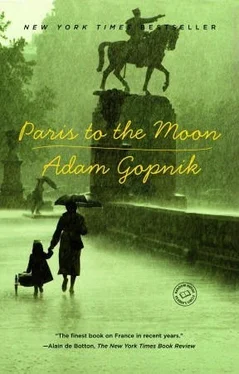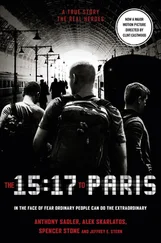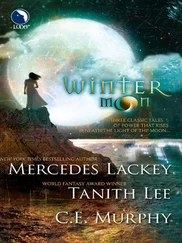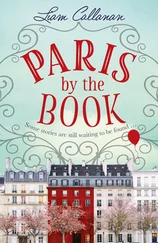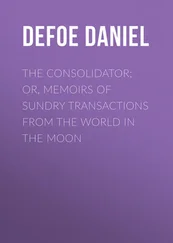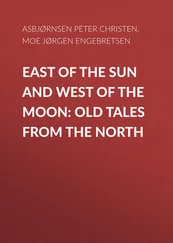Luke, at least, has found a home, shelter from the electronic rain and global weather. He lives in the Luxembourg Gardens. We go there nearly every day, even in the chill November days among the fallen leaves. The design of the gardens is nearly perfect for a small child. There is a playground; there is a puppet theater, where he is too small to go yet, but outside the puppet theater there is a woman selling balloons, and every morning he points to his wrist and says his all-purpose word, bu-bel, which means balloon, ball, whatever it is meant to mean. But then, when we get to the gardens and the po-faced woman goes to tie the balloon to his wrist, he leaps back with fear and demands to have it taken off again. Approach and avoidance with older women.
He rides the carousel, the fallen leaves piled neatly all around it, and though bent-up it is a beauty. The animals are chipped, the paint is peeling, the giraffe and elephant are missing hooves and tusks, and the carousel is musicless and graceless. The older children ride the outside horses. A God-only-knows-how-old carousel motor complains and heaves and wheezes and finally picks up enough momentum to turn the platform around, while the carousel attendant hands a baton to each of the older children riding the outside horses. Then he unhooks a pear-shaped wooden egg from the roof of his little station, at the edge of the turning platform, and slips little metal rings with leather tags attached into the eggs. As the children race around, the little rings drop one after another into the egg and dangle from its base, the small leather tags acting as a kind of target, a sighting mechanism so that the children can see the rings. The older children try to catch the rings with the sticks.
It looks tricky; it looks hard. The kids have to hold the weather-beaten sticks up just so; there’s just one angle, one way to do it. As the carousel picks up speed, it gets going whirring fast and the hand-eye, or rather hand-eye-painted horse, coordination you need looks terrifyingly accomplished. To make things even harder, if two children are mounted one right behind the other, and the first child lances the ring, it means that the next ring, slipping down, only arrives at the base of the wooden egg as the next child arrives, making it just about impossible to aim. If the first child just knocks the ring, on the other hand, the ring starts trembling widely enough to make a good grab impossible. It is a tough game, and what makes it odder is that there is no reward for doing well at it. I have read about this game all my life: going for the Big Brass Ring! It’s an American metaphor. But here there are little tin rings, and no reward for getting them except the satisfaction of having done it. You don’t even get to keep the tin rings for a moment of triumph—Look, Mama!—to show the cluttered stick, rings on it like plums on the branch of a plum tree. The keeper takes back the batons before the carousel has even stopped.
It is hard for me to imagine Luke ever doing this: sitting up there, skewering his rings. For the moment, for a long moment, we sit together in the little chariots and just spin. He keeps his eyes locked on the big kids with the sticks, who come under the heading of Everything He Desires: a stick, a task, a seat on the outside horse. (For me, the sticks and rings game on the carousel looks more like a symbolic pageant. A Writer’s Life: hard job, done intently, for no reason. Cioran used to walk in these gardens. I wonder if he watched this.) The reward for the Parisian children is, perhaps, the simple continuity, the reality that the spinning will never get a prize, but that it will also never stop.
After all, spinning is its own reward. There wouldn’t be carousels if it weren’t so.
On nice days, when we don’t have time to go all the way to the gardens, Luke and I go to the musical horse outside the Oiseau de Paradis (“Bird of Paradise”), a toy store on the boulevard Saint-Germain, and he solemnly rides up and down on it while it plays “Camptown Races.” On rainy days, we go to Deyrolle on the rue du Bac. It is an extraordinary place. It is on the second floor—almost all of the second story—of one of the old hotels particuliers. It is, I suppose, a taxidermists’ supply house and a supplier too of education charts. But it is also one of the great surrealist sites of Paris. Downstairs, at street level, there is the old-fashioned kind of come-hither wraparound window entrance, so that you enter a deep-set door between two vitrines, an architecture that must have been familiar once in Paris—it was the architecture of every South Street shoe store in my childhood—though it is fairly rare now. (Mostly the windows are one sheet of plate glass, with a kind of false front showing the goods and the store behind.) But here you walk past a “seasonal” window, filled with taxidermized animals and bare minimum decor: artificial fallen leaves for autumn, cotton ball “snow” for winter, a few silk flowers for spring. Sometimes the animals inside the windows change too—an ancient, yellowing polar bear right now represents the Spirit of Christmas—but mostly it is the same bunch all year: a fox, a raccoon, a moose. (The polar bear must have been brought down on the same expedition that is celebrated in the window of a lead soldier store on the rue des Ciseaux, which shows an otherwise unrecorded late-nineteenth-century French expedition to the North Pole, with the tricolor hanging over an igloo and reindeer entrecote in a chef’s sauteuse.)
When you open the door at Deyrolle, there is a moose on your left and then an odd display case straight ahead, with snake embryos in little jars of formaldehyde. If you go up the stairs—and Luke will only go up the stairs clutching tightly to my chest—you will find at the top an entire bestiary waiting patiently for your arrival not in casements or vitrines but just standing on all fours on the floor around the casements and vitrines, looking bored and social, like writers at a New York book party They just stand there. There are several lions, genuinely terrifying in their direct address. They have been taxidermized— reanimated is the correct term—not to look fierce but just to look bored—these are French lions, after all—which of course makes them look more fierce.
And then a baby elephant and a jaguar and a gorilla, all just there, with all the other natural things—skeletons and skulls and case upon case of butterflies and beetles—all around. The walls are painted a fading blue-green; the cases are all wood and glass. The main showroom is a two-story space, with a balcony up above. They keep the ordinary farm animals, sheep and goats, up there, looking down on the stars, like the extras in Les Enfants du Paradis.
There are also—and this is the weirdest touch—lots of domestic animals, family pets, Siamese and Scotties and cockers, who stand there on the floor too, among the lions and jaguars, looking furtive, forlorn, a little lost. Mme. Orlovska, the owner, who has become a friend, explains that they are unclaimed taxi-dermed pets from the old Deyrolle regime. Apparently year after year people would come in, weeping and clutching the cold bodies of Fido and Minochette, the house pets, and beg to have them taxidermized, restored, revivified. The taxidermists would go to laborious work, and then, two or three months later, when the pet was at last stuffed into its immortality, the owner, consoled with a new living (though mortal) pet, would have forgotten all about it. No answer to calls or bills or what she calls “cornrnands of conscience.” So the unwanted permanent pets—who were perhaps, as pets always are, mere courtesans of affection, feigning a feeling for food—get replaced, as courtesans will, and find themselves at the feet of the lions and elephants.
Читать дальше
